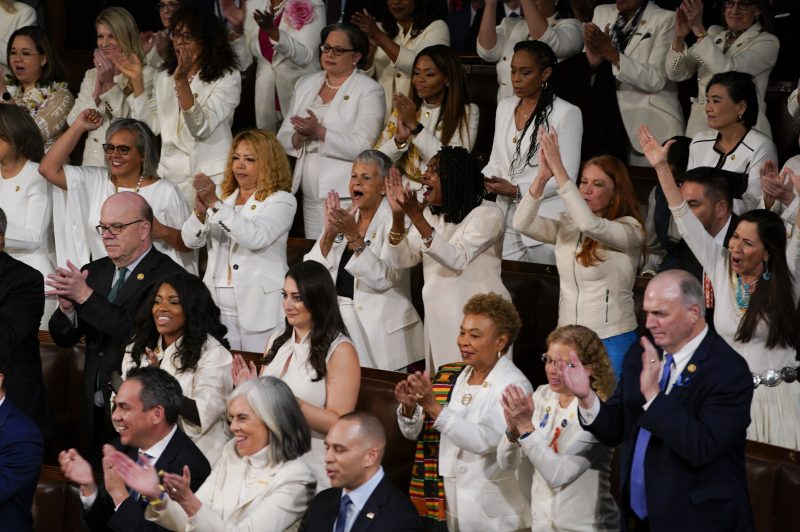In the world of politics, symbolism often plays a significant role in conveying messages, making statements, and capturing attention. A recent example of such symbolic gesture was displayed during the State of the Union address when a group of women from the Democratic Party wore white in solidarity. This act sparked curiosity and prompted discussions about the significance behind this display of unity.
The choice of wearing white attire by these women held deep historical and symbolic meaning. White has been a color traditionally associated with purity, innocence, and equality. It carries with it a long history of symbolism related to women’s rights and suffrage movements. By donning white outfits at a significant political event, these women were drawing attention to the ongoing struggles for gender equality and women’s rights in society.
The gesture of wearing white at the State of the Union address was also a nod to the suffragette movement of the early 20th century. During this period, women fighting for the right to vote often wore white as a symbol of their cause. It served as a visual representation of their unity and determination in the face of adversity. By echoing this historical symbol, the women at the State of the Union were not only honoring the struggles of the past but also highlighting the continued fight for gender equality in the present day.
Additionally, the act of wearing white was a show of solidarity and unity among the female members of the Democratic Party. It sent a powerful message of strength and support, demonstrating that they stand together in their efforts to advocate for women’s rights and equality. The visual impact of a group of women dressed in white, standing out among the sea of dark suits, was a striking reminder of the importance of diversity and representation in politics.
In a deeply divided political climate, the choice to wear white at the State of the Union address transcended mere fashion. It was a deliberate and impactful statement that sparked conversations about gender equality, women’s rights, and the power of symbolic gestures in politics. By using their attire as a form of expression, these women highlighted the ongoing struggles and achievements of women throughout history and reaffirmed their commitment to advancing the cause of equality for all.
In conclusion, the decision of women to wear white at the State of the Union address was a powerful and meaningful gesture that resonated far beyond the confines of the event itself. It was a visual representation of unity, strength, and solidarity in the ongoing fight for gender equality and women’s rights. By invoking the symbolism of the suffragette movement and standing together in a show of defiance, these women made a clear statement about their values and their commitment to creating a more inclusive and equitable society for all.

